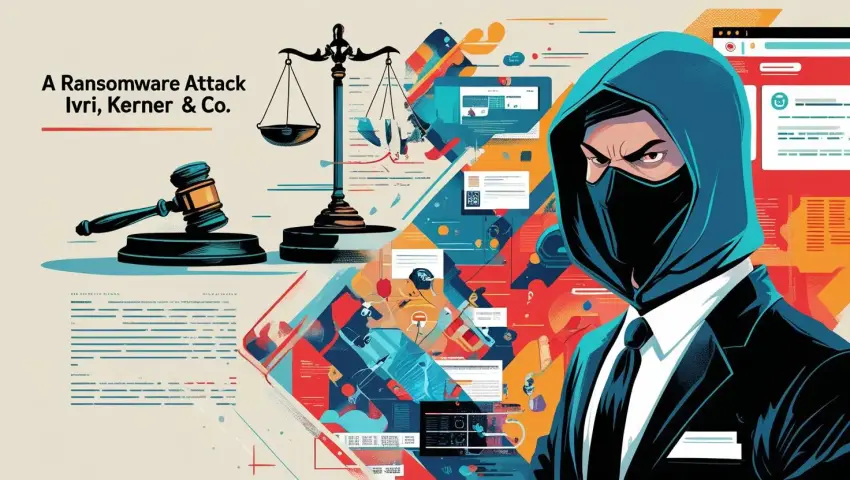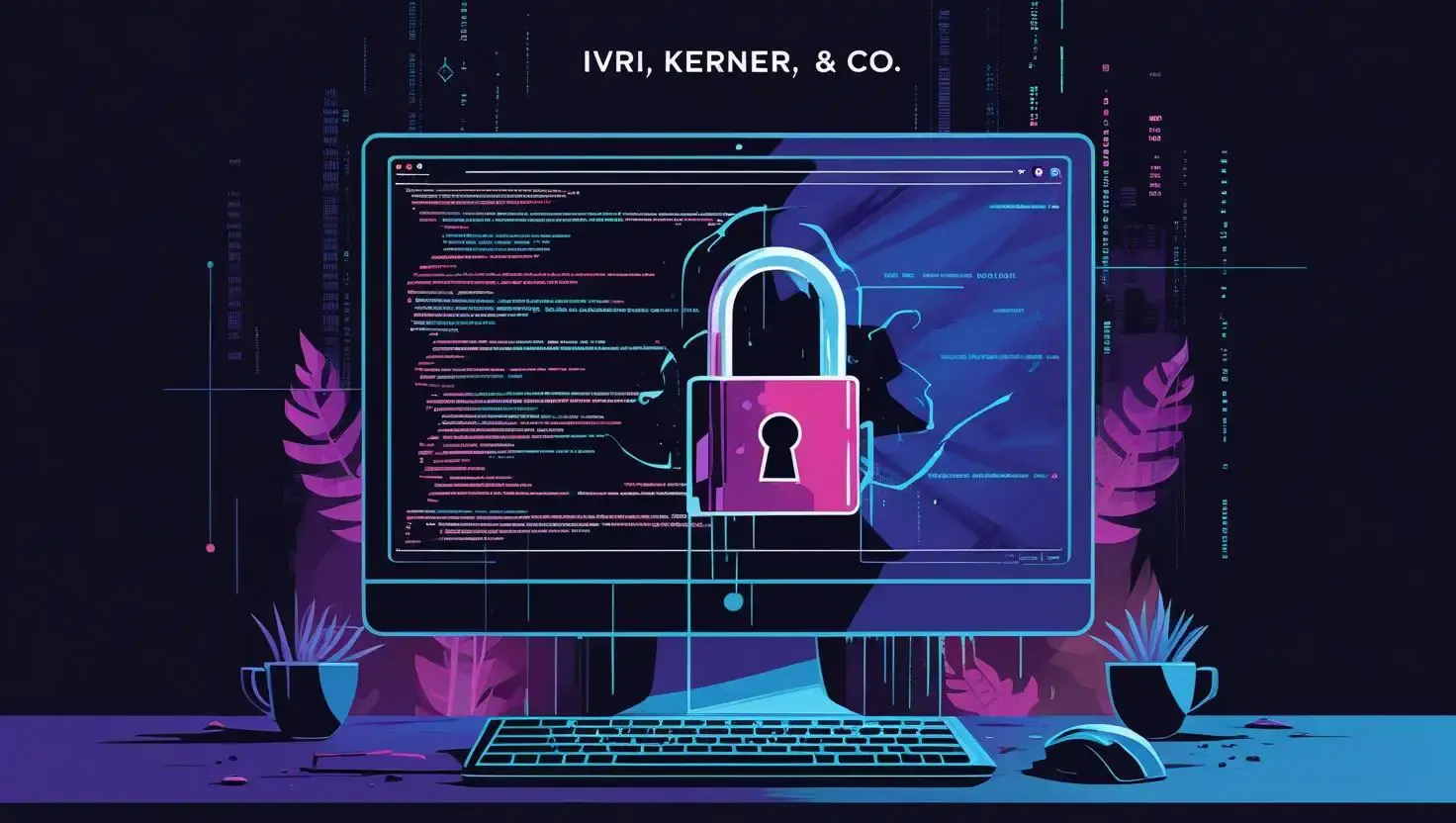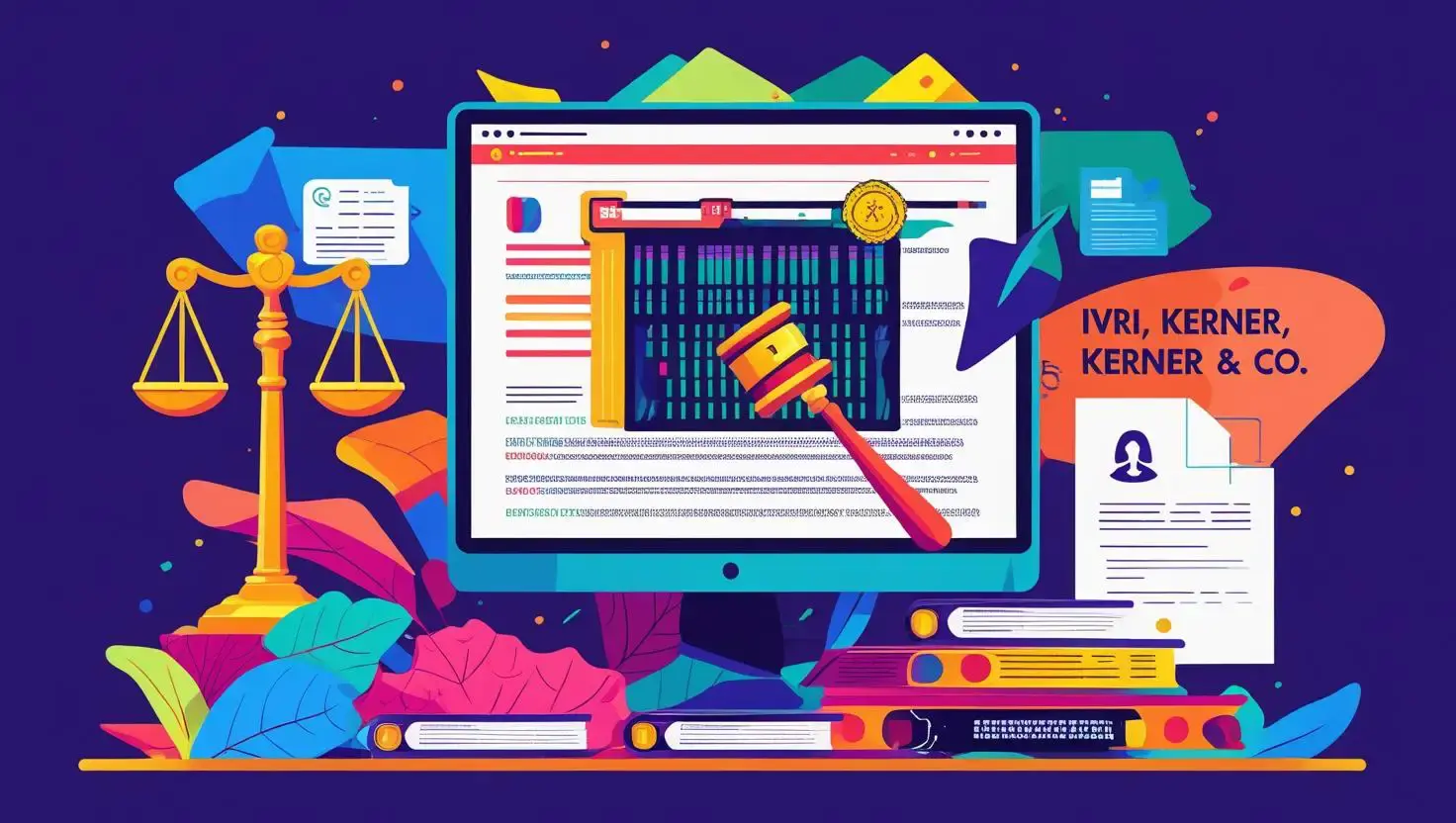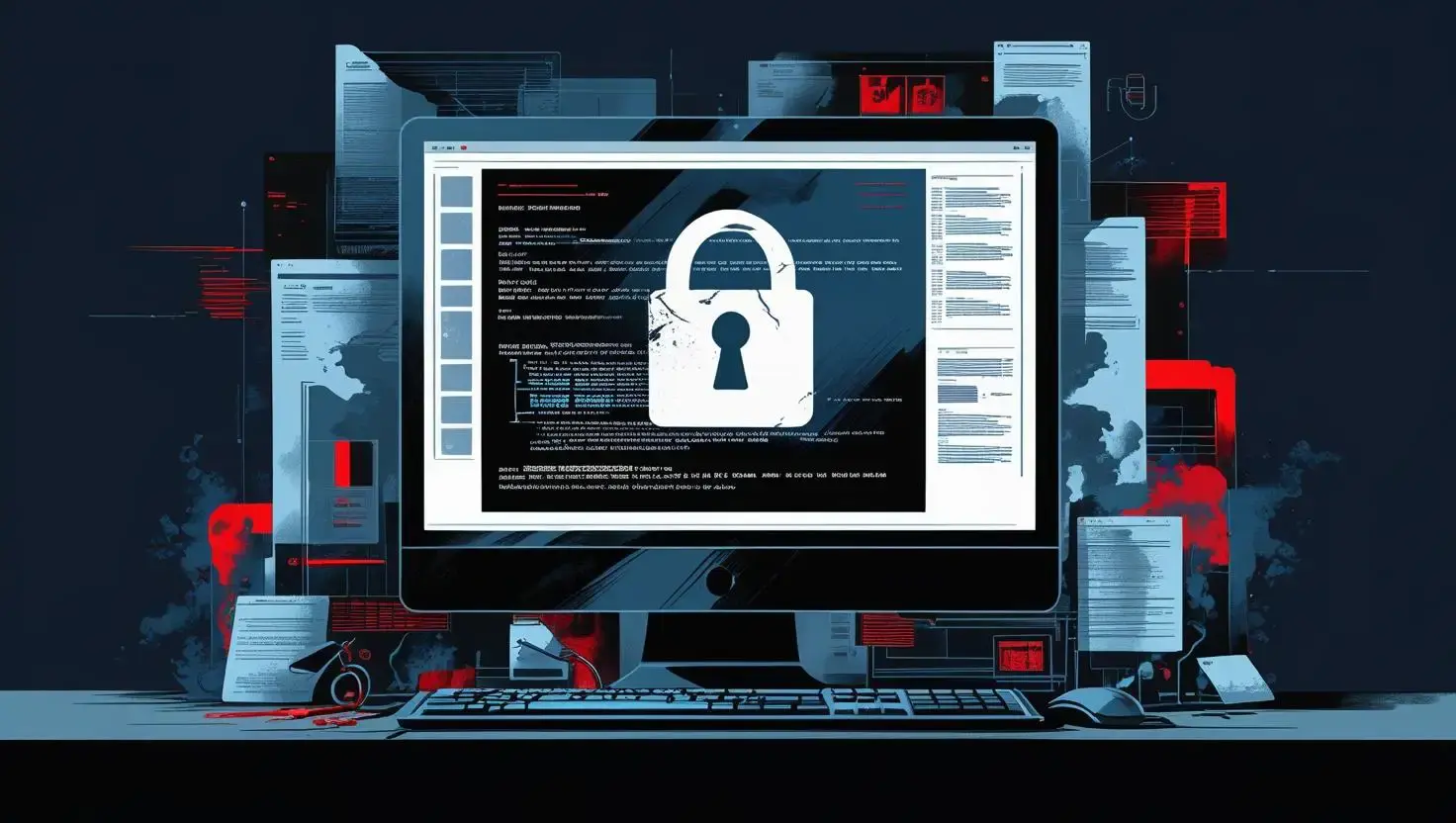
“The Illusion Is Shattered”: Inside the Cyber Siege of Ivri, Kerner & Co
This is not vandalism. This is visibility. This is not cybercrime. This is cyber-resistance. — Handala ransomware group, July 2, 2025

Just before dawn broke over Tel Aviv, the façade of legal sanctity at Ivri, Kerner & Co came crashing down. The attackers didn’t just breach firewalls — they tore through the very foundation of trust the firm projected. At 07:16 local time, their systems surrendered. And by nightfall, their name was etched into the cyber underworld, marked by a bold declaration:
Today, the illusion of power and privacy at Ivri, Kerner & Co.—a so-called pillar of legal integrity—has been shattered. Their walls of encryption have crumbled like the fences they helped build.
The group calling itself Handala, after the barefoot symbol of resistance, claimed they weren’t motivated by profit but by “truth and memory.” With theatrical flair and ideological purpose, they posted:
All internal files, legal documents, client communications, and confidential archives have been leaked, exposed for what they are: a network of influence wrapped in law.
Their message continued to strike at the firm’s identity, accusing its lawyers of enabling systems of control and hiding behind veils of legality. It was a scathing indictment:
They thought they were untouchable behind their legal armor. But no code of law can protect those who profit from occupation, or counsel the engines of control.
More than 345GB of data, they claimed, had been stolen — now “with the wind,” as they put it — flung into the digital abyss for the public to judge.
To the clients: know who speaks in your name. To the lawyers: know who you serve. To the world: ask who they silence. The court of the street is in session.
With that, the cyber-resistance had left its opening statement.

The Anatomy of the Attack
The Attacker: Handala
Handala is a shadowy ransomware group with a distinctly political edge. Drawing its name from the Palestinian symbol of resistance, this group frames its cyberattacks not as criminal enterprises but as acts of ideological defiance. Unlike more commercially motivated gangs, Handala’s rhetoric focuses on visibility, memory, and digital retribution.
They claim responsibility not to extort, but to expose.
Their messages read more like manifestos than ransom demands.
Their public debut—at least under this name—appears to be this breach.
Their technical capabilities are formidable. Based on the timeline and the data volume claimed, this was not a random smash-and-grab. It appears to be a carefully staged operation with strategic messaging and symbolic timing.
The Victim: Ivri, Kerner & Co
Ivri, Kerner & Co is a Tel Aviv-based law firm known for its involvement in high-level litigation, governmental advisement, and confidential case management. In short: a repository of powerful information.
The firm likely manages sensitive files for private sector clients, public institutions, and possibly national entities.
The ransomware group alleges to have extracted 345GB of data.
At the time of this writing, the firm has issued no public statement.
If even a portion of that 345GB contains confidential communications or unreleased legal opinions, this could trigger enormous legal exposure—not to mention reputational damage.
Timeline of the Breach
July 2, 2025 — 07:16 (Israel Daylight Time)
Initial breach occurs. Handala claims to have penetrated the firm’s network and bypassed encryption protocols. There are no indications the intrusion was detected in real time.
Morning–Midday, July 2
The attackers allegedly begin exfiltrating data. Over the next few hours, they remove approximately 345GB of material, including emails, legal files, internal strategy documents, and confidential correspondence.
Early Afternoon, July 2
The firm receives a manifesto-style message from Handala, delivered via email. It reframes the attack as an act of digital resistance and outlines the ideological motives behind the breach. The language is dense, symbolic, and accusatory.
Evening, July 2
The firm is listed on Ransomware.live, a public platform that tracks ransomware activity. The listing includes the firm’s name, the claimed data volume, and excerpts from Handala’s statement. It signals to the world that this was not an isolated incident, but a statement meant to resonate.
Post-July 2 (Ongoing)
Security analysts, journalists, and impacted clients begin monitoring for signs of a file dump. As of now, there are no confirmed links to leaked content. Legal and regulatory fallout appears to be building behind the scenes.

The Fallout
What happened to Ivri, Kerner & Co was not a shake-down for cash. It was a message.
In the unfolding days after the cyberattack, the firm wasn’t just reeling from a data breach—it was caught in the crosshairs of a movement. For Handala, the ransomware group behind the incursion, this wasn’t about profit. It was about protest. Their manifesto was deliberate, symbolic, and confrontational—accusing the firm of enabling systems of control and burying injustice behind legal formality.
This was, by their own admission, a political act.
And in many ways, that makes it more dangerous.
When attackers act out of ideology, not economy, they become unpredictable. Ransom can be negotiated; conviction cannot. And Ivri, Kerner & Co, whether justly or not, has become the face of that conviction’s ire.
The Economic Blow
The costs—while significant—are almost secondary to the message. But they’re real:
With under 25 employees and estimated annual revenue below $5 million USD, the firm faces immediate disruption.
Technical recovery and legal forensics may cost up to $500,000.
Client attrition, particularly among sensitive or international partners, could drain $1–1.5 million in lost business.
Regulatory fines, especially under GDPR or local privacy laws, could add another $100,000 to $1 million to the bill.
Total estimated loss: between $850,000 and $3 million USD—a sum that could destabilize the firm for years to come.
But the greater loss may be harder to quantify: credibility. In a profession where trust is currency, silence is not always strength. As of now, Ivri, Kerner & Co has issued no statement, no denial, no reassurance to its clients.
A Breach That Echoes
In quiet legal offices across the region—and perhaps the world—similar firms are now asking: Are we next?
And in activist circles, Handala’s message has already spread.
No ransom demanded.
No files leaked—yet.
Only a statement:
This is not cybercrime. This is cyber-resistance.
This wasn’t a robbery. It was a rupture.
Reclaiming Control
The breach at Ivri, Kerner & Co was not just a technical failure — it was a symbolic act. But no matter how ideologically charged the language or how politically framed the motive, unauthorized access, data theft, and digital coercion remain criminal offenses under international law.
This was not protest. It was a breach of trust, privacy, and legality.
At Cy-Napea®, we do not take sides in political, racial, or ideological conflicts. Our mission is singular: to protect our clients, uphold the law, and stand on the right side of history. We believe in digital sovereignty, lawful defense, and the right to operate without fear in a connected world.
How Cy-Napea® Defends Against the Unthinkable
Our cybersecurity framework is built on four integrated lines of defense, designed to stop attackers at every stage of the kill chain:
1. Cybersecurity Awareness Training
Before any firewall is tested, attackers exploit human error. That’s why our first layer is people-first.
Phishing simulations train staff to recognize and report suspicious emails.
Social engineering awareness prevents manipulation through fake IT calls or login requests.
Real-world attack scenarios prepare teams to respond decisively under pressure.
2. Advanced Email Security
Email remains the most common attack vector. Our AI-powered email security platform:
Blocks phishing attempts before they reach inboxes.
Flags impersonation and spoofing attempts in real time.
Analyzes behavioral patterns to detect fraudulent login requests.
3. EDR/XDR/MDR Solutions
If attackers breach the perimeter, our detection and response systems activate instantly.
Endpoint monitoring flags anomalies like mass file encryption.
Automated containment isolates infected machines to prevent lateral spread.
Threat hunting AI identifies and neutralizes threats before exfiltration occurs.
4. Advanced Backup & One-Click Recovery
Even the best defenses can be tested. That’s why we ensure recovery is fast, clean, and complete.
Real-time backups ensure zero data loss.
One-click recovery restores systems in minutes, not days.
Immutable storage prevents attackers from corrupting or deleting backups.
This is not theory. It’s the same framework that could have prevented — or at least neutralized — the catastrophic breach at Marks & Spencer. And it’s the same framework we deploy for every Cy-Napea® client, every day.
Disclaimer
This article is based entirely on publicly available information. All technical assessments, financial estimates, and strategic insights are derived from open-source intelligence, historical breach data, and industry-standard modeling. Cy-Napea® does not endorse or oppose any political, racial, religious, or ideological position. Our sole mission is to protect our clients, obey the law, and stand on the right side of history — with integrity, neutrality, and resilience.
Sources
IBM Security X-Force Threat Intelligence Index (2024)
Coveware Quarterly Ransomware Reports (2023–2024)




